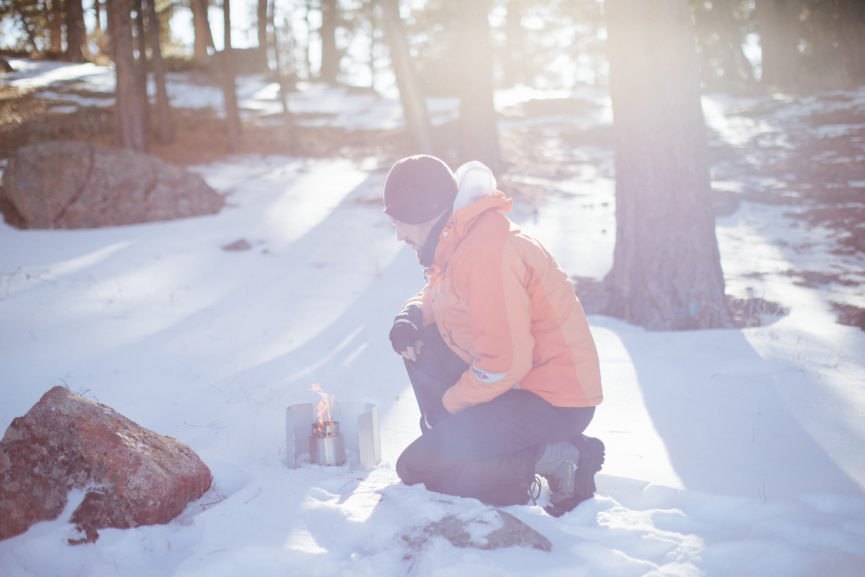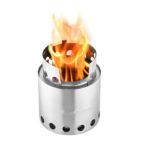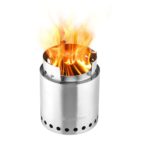By Tanner Colley
“We are keeping this in our car along with a one week supply emergency food kit as we travel sometimes in remote places. It is ideal for the car as we don’t need to carry a fuel source with it.”
– Carol B
Emergency can strike at any time and force you into survival mode. Severe weather can leave your home without power or even strand you on the roadside. A reliable heat source is vital in emergency planning and you can minimize your pack weight and footprint with an ultra-efficient stove, operating on small twigs and sticks.
Regardless of your level of experience, finding yourself in an emergency and in need of a heat source while hiking or backpacking is a very real possibility. In fact, a recent study found the majority of people that get lost in the woods is simply due to wandering off the trail.
“Backpackers already know that this little stove is a must have when you go into the backcountry, but for those of you who don’t do that much, or don’t know what to have on hand in case of emergency or loss of power, this stove is it! Period!” — Rob
Humans have always looked to fire as a necessity in a survival situation. In addition to cooking, fire can do a lot to help you survive in the open wilderness:
- Disinfects water for drinking and sanitizes bandages and other first aid equipment
- Signals your location for emergency assistance
- Deter predators
Fire needs fuel, and to outlast any emergency, you want to make sure you have enough of it. One of the most popular fuel options for camp stoves since the 1930’s have been compressed gas and liquid canisters. They are convenient for backpackers and campers but not the most reliable, portable, or sustainable option.
Canister camp stove fuel is unreliable, bulky, and limited
The last thing you want to happen when you are stranded in the woods is to run out of fire. You can easily solve that problem by putting more canisters in your emergency kit, but gas and liquid fuel canisters are bulky. You need to be able to move quickly and efficiently. A swollen pack filled with fuel canisters, your stove, a first aid kit, food, and other supplies will weigh you down when you need to get to help or safety.
Another problem is storing these types of canisters. Compressed and liquefied gases are hazardous inside of a car. They can potentially leak toxic and flammable fumes over time and create an emergency rather than help you get through one.
Canister fuel can also just go plain bad if not stored properly. Fuel canisters need to be kept in a cool, dry place. This works if you are keeping them in a closet at home, but you have to inspect them every few months to ensure they are still pressurized and not leaking air. Our busy lifestyles can leave emergency kits unchecked, and when an emergency happens without warning, you could be without fuel for your fire.
A more reliable fire source in your emergency kit is a camp stove that can help you maintain a sustainable, reliable fire for as long as you need it.
Need a sustainable, reliable fire source in your emergency kit?

“I love that I don’t have to worry about fuel.” — Ron
Solo Stove camp stoves run on nature. Any twigs, pinecones, small pieces of hardwood (we recommend pieces 1″ to 2″ in diameter), leaves, or any other biomass will keep you warm, fed, and safe. Our stoves are ultra portable and lightweight ranging from 9oz to 2.2lbs. Add a small fire striker keychain and you have a lean yet powerful fire source to make you a master survivalist if the need arises.
“Use this stove as your first choice for survival cooking . . . Excellent workmanship, epic design, stay safe! Hope is not a plan. Be prepared.” — Harold
For more information about making your own emergency kit, visit www.ready.gov.
Sources: ready.gov, Smokey Mountains, National Geographic




